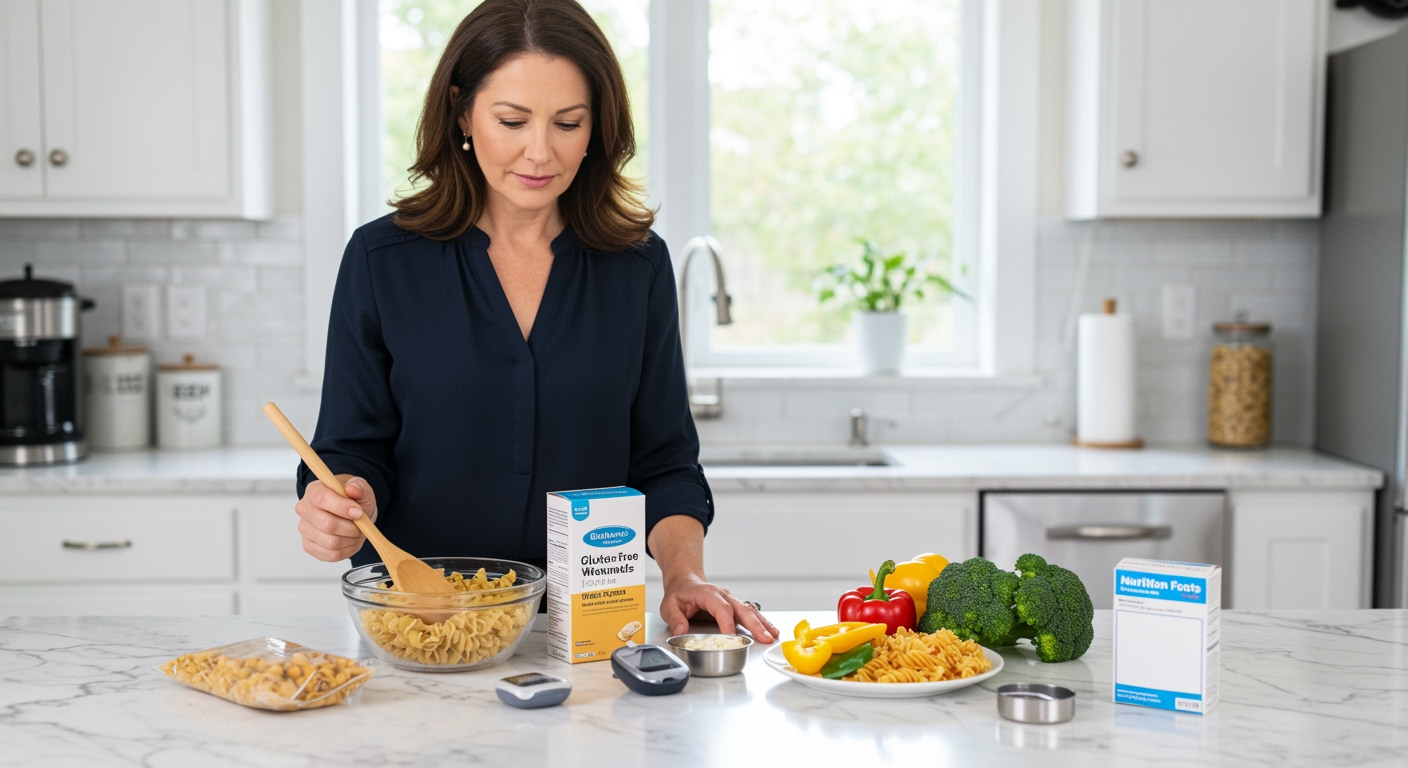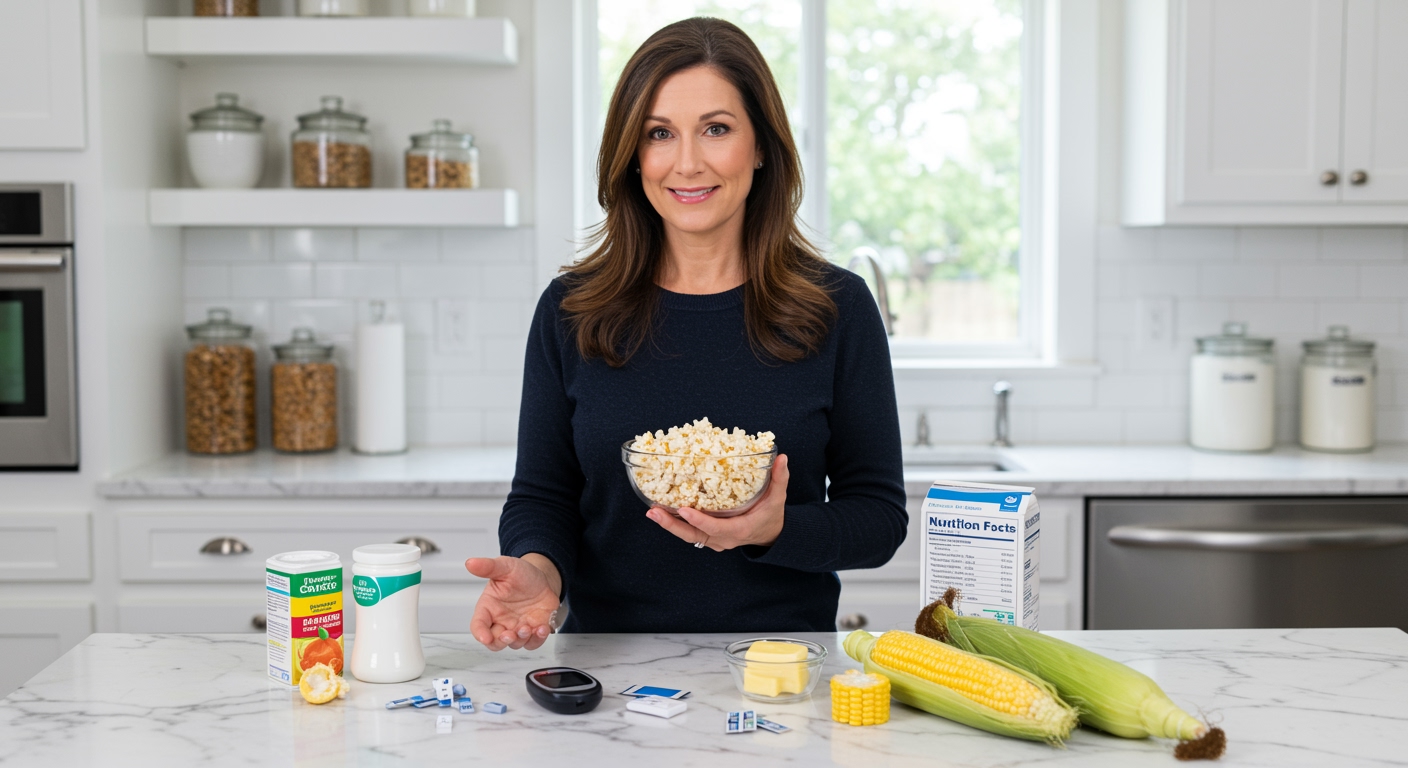✪ Key Takeaway: Rice porridge can spike blood sugar quickly due to its high glycemic index, making portion control essential for diabetes management.
Introduction
Rice porridge feels like the perfect comfort food when you need something gentle and nourishing.
You might wonder if this seemingly innocent dish fits into your diabetes meal plan without causing blood sugar chaos.
Hi, I’m Abdur, your nutrition coach and today I’m going to explain exactly how rice porridge affects your blood sugar and share practical strategies for enjoying it safely.
How Does Rice Porridge Affect Blood Sugar Levels?
Rice porridge sends your blood sugar on a rapid upward journey because of how your body processes the broken-down rice grains.
The cooking process breaks down the rice structure into easily digestible carbohydrates that your digestive system absorbs much faster than whole grains.
Your pancreas responds by releasing insulin to manage this sudden glucose surge, but people with diabetes often struggle with this rapid response mechanism.
Research shows that rice porridge has a glycemic index between 78-88, which places it in the high category that nutritionists recommend limiting for diabetes management.
The glycemic index measures how quickly foods raise blood sugar compared to pure glucose, and anything above 70 is considered high.
This means rice porridge can cause blood sugar spikes similar to eating candy or white bread, especially when consumed in large portions.
✪ Fact: Rice porridge digests 3-4 times faster than whole grain rice due to the cooking process breaking down fiber structures.
What Makes Rice Porridge Different From Regular Rice?
The extended cooking time transforms rice into a completely different food from a blood sugar perspective.
Regular cooked rice maintains some structural integrity that slows down digestion, while porridge becomes a semi-liquid mixture that your stomach processes rapidly.
The water content in porridge also plays a crucial role because it helps your digestive enzymes access the starch molecules more efficiently.
This increased accessibility means your small intestine absorbs glucose much faster, leading to those unwanted blood sugar spikes that diabetes management aims to prevent.
Additionally, the cooking process breaks down resistant starch, which is the type of starch that normally helps slow glucose absorption.
When you eat regular rice, some starch remains resistant to digestion and acts like fiber, but porridge eliminates most of this protective effect.
✪ Pro Tip: Let cooked rice cool completely before reheating to increase resistant starch content and slow glucose absorption.
Can You Make Rice Porridge Safer For Diabetes?
You can significantly improve rice porridge for diabetes management by making smart ingredient additions and preparation changes.
Adding protein sources like eggs, Greek yogurt, or nuts creates a mixed meal that slows down glucose absorption and reduces blood sugar spikes.
Fiber-rich additions such as chia seeds, ground flaxseed, or chopped vegetables help create a protective barrier that moderates how quickly your body processes the rice.
The timing of your rice porridge consumption also matters because your body handles carbohydrates differently throughout the day due to natural hormone fluctuations.
Morning consumption often works better than evening because your insulin sensitivity is typically higher after overnight fasting.
Portion control becomes absolutely critical, with a half-cup serving being the maximum recommended amount for most people managing diabetes.
Using brown rice instead of white rice provides additional fiber and nutrients, though it still requires careful portion management.
✪ Note: Adding healthy fats like nuts or seeds can reduce the glycemic impact by up to 30% compared to plain rice porridge.
What Are Better Alternatives To Rice Porridge?
Several porridge alternatives provide similar comfort while offering superior blood sugar control for diabetes management.
Steel-cut oats create a creamy texture similar to rice porridge but contain beta-glucan fiber that actively helps lower blood glucose levels.
Quinoa porridge delivers complete protein along with fiber, making it a nutritionally superior choice that supports stable blood sugar throughout the morning.
Cauliflower rice porridge might sound unusual, but it provides the creamy texture you crave with minimal carbohydrate impact on blood sugar.
Chia seed pudding offers omega-3 fatty acids and soluble fiber that actually helps improve insulin sensitivity over time.
These alternatives allow you to enjoy warm, comforting breakfast options without the blood sugar roller coaster that rice porridge typically creates.
✪ Pro Tip: Blend cauliflower rice with a small amount of coconut milk for a surprisingly satisfying porridge texture with 90% fewer carbs.
The Bottom Line
Rice porridge can fit into a diabetes meal plan, but it requires careful planning, portion control, and strategic additions to minimize blood sugar impact.
The key to diabetes management is not avoiding all your favorite foods, but learning how to enjoy them in ways that support your health goals.
I would love to hear about your experiences with rice porridge and diabetes management, so please share your questions, success stories, or concerns in the comments below.
References
At NutritionCrown, we use quality and credible sources to ensure our content is accurate and trustworthy. Below are the sources referenced in creating this article:

Abdur Rahman Choudhury is a nutrition coach with over 7 years of experience in the field of nutrition.
Academic Qualifications
- Master of Science (M.Sc.) in Biochemistry: The University of Burdwan, India
- Bachelor of Science (B.Sc.) in Biochemistry: The University of Burdwan, India
Research Experience
- Genetic variations in the CYP11A gene among PCOS and Metabolic Syndrome patients: The Mission Hospital, India
Professional Certifications & Courses
- Stanford Introduction to Food and Health: Stanford University (US) - Coursera
- Certificate in Nutrition: Fabulous Body Inc. (US)
- Lose Weight and Keep It Off: Harvard Medical School (US)
- Nutrition and Disease Prevention: Taipei Medical University (Taiwan) - FutureLearn
Clinical Experience
- 7+ years as a nutrition coach
- Direct experience working with hundreds of patients to improve their health
Abdur currently lives in India and keeps fit by weight training and eating mainly home-cooked meals.




